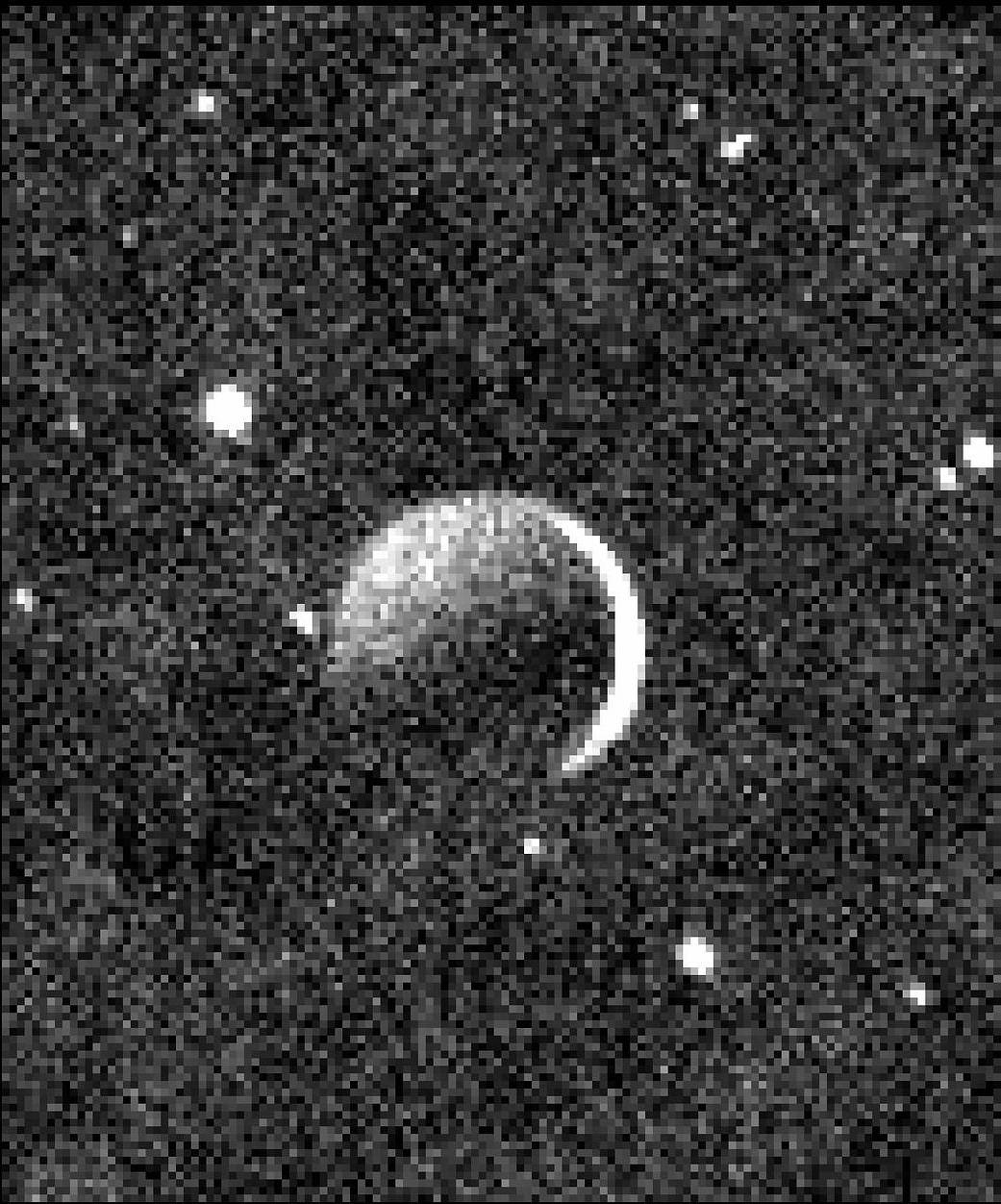[caption id="attachment_133051" align="alignnone" width="482"]
Looking back at an overexposed Charon and Plutoshine. Credit: NASA/JPL/New Horizons[/caption]
Sometimes, its not the eye candy aspect of the image, but what it represents. A recent image of Pluto's large moon Charon courtesy of New Horizons depicting what could only be termed 'Plutoshine' caught our eye. Looking like something from the grainy era of the early Space Age, we see a crescent Charon, hanging against a starry background...
So what, you say? Sure, the historic July 14
th
, 2015 flyby of New Horizons past Pluto and friends delivered images with much more pop and aesthetic appeal. But look closely, and you'll see something both alien and familiar, something that no human eye has ever witnessed, yet you can see next week.
We're talking about the reflected '
Plutoshine
' on the dark limb of Charon. This over-exposed image was snapped from over 160,000 kilometers distant by New Horizons' Ralph/Multispectral imager looking back at Charon, post flyby. For context, that's just shy of half the distance between the Earth and the Moon. "Bigger than Texas" (Cue
Armageddon
), Charon is about 1200 kilometers in diameter and 1/8
th
the mass of Pluto. Together, both form the only true binary (dwarf) planetary pair in the solar system, with the 1/80
th
Earth-Moon pair coming in at a very distant second.
[caption id="attachment_133052" align="alignnone" width="580"]
Earthshine on the Moon. Credit: Dave Dickinson[/caption]
We see reflected sunlight coming off of a gibbous Pluto which is just out of frame, light that left the Sun 4 hours ago and took less than a second to make the final Pluto-Charon-New Horizons bounce. You can see a similar phenomenon next week, as Earthshine or Ashen Light illuminates the otherwise dark nighttime side of the Earth's Moon, fresh off of passing New phase this weekend. Snow and cloud cover turned Moonward can have an effect on how bright Earthshine appears. One ongoing study based out of the Big Bear Solar observatory in California named
Project Earthshine
seeks to characterize long-term climate variations looking at this very phenomenon.
[caption id="attachment_133053" align="alignnone" width="580"]
The view on the evening of January 28th looking west at dusk. Credit: Stellarium.[/caption]
Standing on Pluto, you'd see a 3.5 degree wide Charon, 7 times larger than our own Full Moon. Of course, you'd need to be standing in the right hemisphere, as Pluto and Charon are tidally locked, and keep the same face turned towards each other. It would be a dim view, as the Sun shines at -20 magnitude at 30 AU distant, much brighter than a Full Moon, but still over 600 times fainter than sunny Earth. Dim Plutoshine on the nightside of Charon would, however, be easily visible to the naked eye.
A small 6 cm instrument, Ralph images in the visual to near-infrared range. Ralph compliments New Horizons larger LORRI instrument, which has a diameter and very similar optical configuration to an amateur 8-inch Schmidt-Cassegrain telescope.
[caption id="attachment_133055" align="alignnone" width="580"]
Charon as seen from Pluto. Credit: Starry Night.[/caption]
Don't look for Pluto now; it just passed solar conjunction on the far side of the Sun on January 7
th
, 2017. Pluto reaches opposition and favorable viewing for 2017 on July 10
th
, one of the
*101 Astronomical Events for 2017*
that you'll find in our free e-book, out from
Universe Today
.
And for an encore, New Horizons will visit the 45 kilometer in diameter Kuiper Belt Object 2014 MU69 on New Year's Day 2019. From there, New Horizons will most likely chronicle the environs of the the distant solar system, as it joins Pioneer 10 and 11 and Voyagers 1 and 2 as
human built artifacts
cast adrift along the galactic plane.
[caption id="attachment_133054" align="alignnone" width="580"]
A pretty pair: Pluto and Charon. Credit: NASA/JPL/New Horizons[/caption]
And to think, it has taken New Horizons about 18 months for all of its flyby data to trickle back to the Earth. Enjoy, as it'll be a long time before we
visit Pluto and friends again.
 Universe Today
Universe Today
